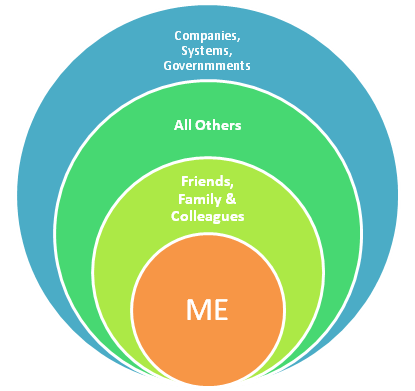The work of a manager is often daunting. The day to day grind of demands from both the bottom and the top of the food chain threaten to tear most managers in half. Fortunately, and unfortunately, there is a slew of information on how to be a good manager available in thousands of training forums and articles on the net. Luckily, you stumbled on this one.
There is only one secret to a successful manager: Perspective.
The ability to take multiple perspectives on a problem or situation is absolutely critical. From looking foreward and backward in time to understanding the pressures on your clients, subordinates, and leadership – perspective is the key to untangling the stickiest of situations.
Let’s look at a situation:
Joe has neglected to file his time sheet (again) causing headaches for your payment processor and delaying your ability to bill the customer.
Worst Response: “Joe, Your fired!”
Even if you are firing someone, this is the worst way to go about it. Additionally, a manager who is clearly taking out his frustration on his employees is abusive. At no point during this conversation can the problem be anyone’s fault but Joe’s. In this company, it is likely that few employees stay more than a year – with many turning over within a few months.
Second Worst Response: “Joe, Fix it or else (your fired)!”
Similar to the last response – this places the accountability directly on Joe and threatens his livelihood. The likely result here is strict “to the letter only” compliance – think time sheets in military time and down to the minute including bathroom breaks (this could cause just as much problem as slow/late timesheets). The big thing here is that the boss is using fear to drive action, and turning an organizational hierarchy into a value hierarchy – one that doesn’t leave anyone feeling good.
Typical Manager: “Joe, we need you to fill out your time sheet – this is becoming a problem because (blah blah blah) – please fix it.”
This is better because it helps Joe become aware of the impact of late timesheets. It still blames Joe for the problem, and demands he fix it. No support from management should be implied here – and it puts Joe at risk to ask in a situation already viewed as his fault. While the threat was not explicit, since the action required is clearly a demand – negative consequences can easily (and will be) inferred.
Better Manager: “Joe, your time sheets aren’t coming in on time – how can we solve this problem together?”
This allows Joe to create a path forward out of a situation. While it doesn’t directly blame Joe per se, it does make Joe responsible for the problem.
Best Manager: “Joe, I noticed that your time sheets didn’t arrive on time – is there a problem?”
This is best because it states a fact without placing blame – it also opens the door for Joe to talk about the situation without feeling pressured or bullied. In this situation Joe might volunteer that he is having personal troubles at home, is overworked or pressured by clients, or is frustrated with how long it takes to fill out paperwork. Most likely the conversation will bounce around a bit with Joe acknowledging his error (if it is his) and the best manager will ask him how they can work together to fix the problem.
Looking across the example, the biggest difference apart from communication style is the manager’s willingness to include perspectives other than his/her own. As we include perspectives in our approach to problem solving, we find that some things may not be as they seem. This makes working with people a bit easier. It’s almost always safer, and more productive to take the perspective of an explorer than that of a judge.
By applying a different perspective to personnel management, you may find that you can incorporate both a company perspective and an employee perspective to create better futures for both.

